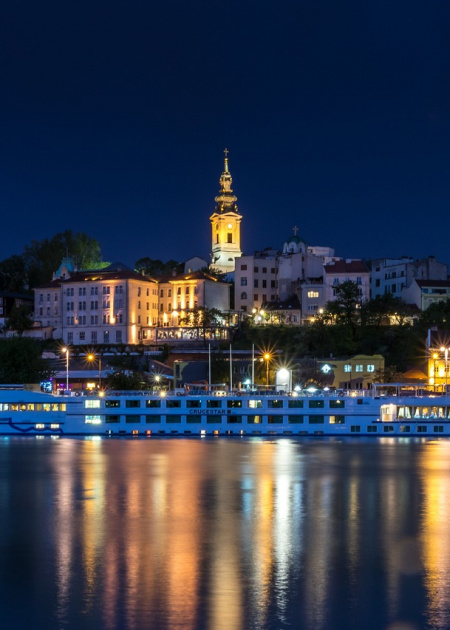Why travel to
Serbia is an underrated destination full of incredible sights, classic architecture, and beautiful natural scenery. From the stunning Nevidio Canyon to city streets full of vibrant culture and music, Serbia has something to offer for everyone. The locals are very friendly, the food is delicious and the atmosphere is tranquil. Serbia offers a taste of Eastern Europe with a variety of interesting historical sites, including Roman ruins and a vast range of monasteries. Serbia is also known for its distinct wines, which are sure to be a highlight during your trip.
Cost of living
The cost of living in Serbia varies depending on lifestyle and location. Generally, the expenses for housing, food, utilities, transportation and entertainment are lower in Serbia than in other parts of Europe. However, expatriates in Serbia may have to pay more for certain goods and services due to import taxes and the devaluation of the Serbian dinar.
Safety
Yes, Serbia is generally a safe place to travel. The crime rate is low, and the people are friendly and welcoming. In order to stay safe, travelers should take standard precautions such as avoiding dark, isolated areas and being aware of their surroundings. It is also recommended to research potential areas of unrest in advance and to be aware of local laws and customs.
Places to visit
- Belgrade: Serbia’s capital, Belgrade is a vibrant city full of churches, museums, cafes, and Castle Kalemegdan. From Kalemegdan there are amazing views of the city and the Danube and Sava rivers.
- Novi Sad: Located north of Belgrade, this is a great student city with a buzzing cultural scene and plenty of cool cafes and vibrant nightlife. The Old Town of Petrovaradin is a must-see while in Novi Sad.
- Kopaonik: Enjoy some of the best skiing in Serbia up in the Kopaonik Mountains. This area was declared a national park in 1981 and is home to a number of wildlife species.
- Vojvodina: Located in the northern part of Serbia, this region is full of rural charm and is home to some incredible wildlife parks like Fruska Gora National Park.
- Zlatibor: This mountain region is located near the Bosnian border and offers a great range of activities from skiing to hiking. Also visit the historic village of Sirogojno, which is a major tourist attraction in the area.
- Subotica: This city is known as the little Vienna of Serbia and is filled with beautiful Baroque architecture and interesting museums. Definitely visit the Sacred Heart Cathedral while in Subotica.
- Drina River: This is one of the best places to visit in Serbia if you’re looking to get away from it all. The emerald green waters are stunning and there are a number of traditional villages along the banks of the river.
- Oplenac: Visit the impressive St. George Church, which is the burial site of former Yugoslav ruler King Peter I and his descendants. The complex includes a monastery and a chapel, and offers stunning views of the surrounding area.
Food to try
- Kajmak - a creamy dairy product that is similar to clotted cream. It is traditionally made by boiling down full-fat milk in copper pots where it slowly thickens and forms a layer of cream at the top. It is often enjoyed as a spread on its own or paired with bread.
- Sarma - a national dish of Serbia consisting of cooked sour cabbage leaves wrapped around a filling of minced meat, vegetables, and spices. The mixture is then rolled up and cooked in a savoury broth.
- Cevapi - grilled minced beef and pork sausages that are commonly served with flatbread and a type of cream called kajmak.
- Pljeskavica - a type of hamburger typically made from ground beef, pork, or veal. It is usually served with onions, ajvar, and kajmak.
- Gibanica - a pastry dish made with using thin layers of pastry dough, cheese, and either apples or sour cherries.
- Rakija - a strong alcoholic drink typically made with grapes, plums, or other fruit. It is often served with meals or as an after-meal digestif.
Souvenirs
- Spruce Wood Carvings - These intricate wood pieces of art are handmade in Serbia and feature iconic Serbian figures, landscapes, animals and more.
- Handmade Aprons - A traditional and traditional handmade apron with colourful embroidery detailing that makes a great souvenir to bring back home.
- Traditional Ceramics - Made in the classic Serbian style, these ceramics are both decorative and functional, making them a great souvenir if you plan on using your purchases back home.
- Paper Art - These delicate works of cut and layered paper are a unique take on Serbian artwork and a great take-home gift.
- Crystalware - Serbia's mountains are home to some of the world's finest-quality crystal, meaning that gifts of ornaments and barware make for ideal souvenirs.
- Wooden Toys -These colourful and authentic wooden toys are made in Serbia and are sure to bring joy to any child.
- Bockar Embroidery - Made in a traditional style of embroidery originating from south Serbia, Bockar embroidery is a popular souvenir with intricate patterns and vivid colours.
- Serbian Traditional Foot Binding - This traditional folk art binding paper around the feet of couples on their wedding day is a popular keepsake among tourists.
- Serbian Musical Instruments - Whether you are looking for a traditional instrument or a reproduction of a classic instrument, the Serbian traditional instruments make great souvenirs.
- Serbian Militaria - Serbia is home to some historically significant pieces and memorabilia from the Balkan Wars and WWI and WWII, these items make excellent collectable souvenirs.




